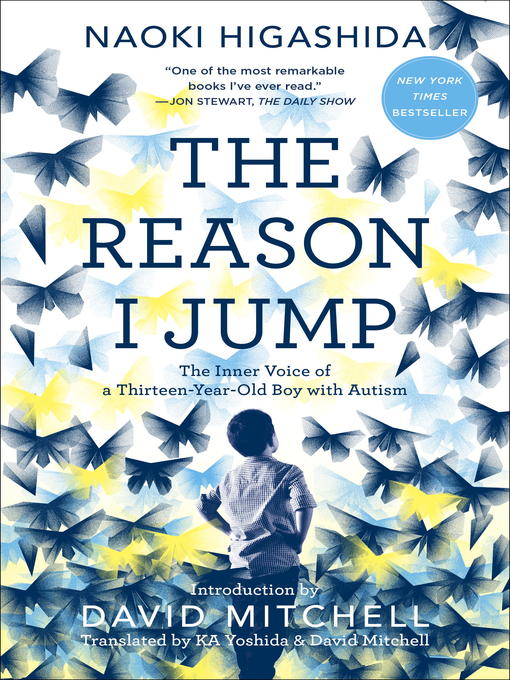
The Reason I Jump
The Inner Voice of a Thirteen-Year-Old Boy with Autism
صدای درونی یک پسر سیزده ساله با اوتیسم
فرمت کتاب
ebook
تاریخ انتشار
2013
Lexile Score
1000
Reading Level
4-7
ATOS
5.8
Interest Level
6-12(MG+)
نویسنده
David Mitchellشابک
9780812994872
کتاب های مرتبط
- اطلاعات
- نقد و بررسی
- دیدگاه کاربران
نقد و بررسی

September 23, 2013
Just thirteen years old, effectively unable to speak , Higashida used a special alphabet grid to compose this slim, informative book, which provides an unprecedented look into the mind of a young person with autism. Constructed in a series of questions and answers, interspersed with short fictional stories, Higashida gallantly attempts to explain why he and others with autism do the things they do, which often confound caretakers and onlookers. He bares his heart by putting forth the questions people ask, or long to askâsuch as "why do you talk so loudly and weirdly?" and "do you have a sense of time?"âproviding insight into the life of someone with autism. Higashida often achieves a clarity and wisdom that is surprising for such a young person, like when he suggests that autism should be viewed as simply another personality type. Other times the reader is reminded of his age, when he earnestly pleads on behalf of himself and others with autism for understanding and patience. The result is a mixture of invaluable anecdotal information, practical advice and whimsical self-expression. This is imperative for Higashida because, as he so elegantly puts it, "being able to share what I think allows me to understand that I, too, exist in this world as a human being."

























دیدگاه کاربران